Research topic
(Back)
X-Ray imaging
Pathologies in the vascular system (angiopathies), and in particular those concerning the heart (cardiopathies)
are the first death cause in Europe. They are mostly due to stenosis formations: lipids deposits reduce or occlude the vessels.
The consequences can be very serious especially when they impact arteries that are as crucial to the organisms life as coronaries
(which provide the heart in oxygen).
X-Ray imaging offers a minimally invasive mean to diagnostic and to treat such malformations. The clinician introduces through
the patient's groin the interventional tools he needs, and handles them remotely, guiding his gesture based on the images acquired
with X-Rays.
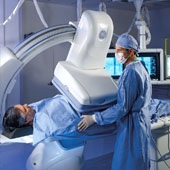 General Electric Innova imaging system
General Electric Innova imaging system |
|
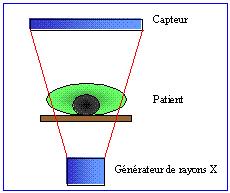 X-Ray image formation
X-Ray image formation |
Difficult interventional images
The X-Ray imaging system can be used both for diagnostic or interventional purposes. In the first case relatively high radiation
are allowed, resulting in well contrasted images. On the other hand, interventional exams are carried out under limited radiation and
must thus be digitally denoised.
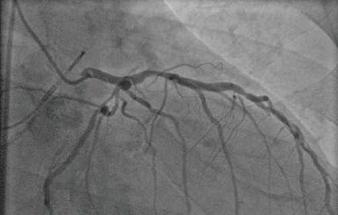 Typical image for diagnostic exams
Typical image for diagnostic exams |
|
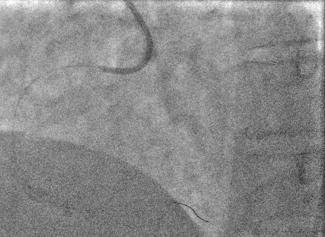 Typical image for difficult fluoroscopic exams
Typical image for difficult fluoroscopic exams |
Since spatio-temporal denoising techniques present difficult problems of noise coloration, our work focuses on pure temporal
filtering only. My PhD aims at overcoming the main limitation of temporal filters: its unability to handle motions.
(More)
Transparent images
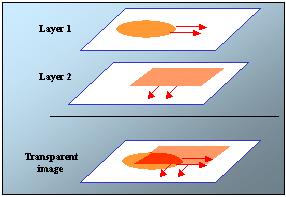 Layer model
Layer model |
|
 Transparent fluoroscopic image
Transparent fluoroscopic image |
Because of the physics of the X-Rays, the clinical images are transparent. For instance, we can see on the example above
the heart superimposed to the diaphragm, the lungs, the spine, the ribs and the interventional devices.
(More)
Thus, original methods, tackling specifically the transparency issue, must be developped to answer the two following questions:
How can we estimate the motions present in the image?
How can we use that information in an efficient temporal denoising?
Our contributions on these two topics are briefly introduced in the next page.
Back




